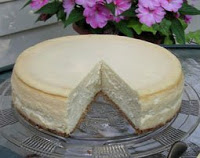
No question about it—my most frequently asked question about writing cookbooks and food articles is “Do you test your recipes?” If I had just a dollar for every time I’ve been asked this, I could treat myself and my husband to dinner at Thomas Keller’s French Laundry (though realistically, the funds probably wouldn’t cover our wine!).
I know why people ask. America has a hundred-plus year tradition of community fundraiser cookbooks that simply gather together recipes from local cooks and print them. Often lacking any editing or follow-up testing, the recipes may inadvertently omit key ingredients, quantities, and steps. Occasionally, even cookbooks by well-known publishers and authors used to contain poorly tested or untested recipes. Sometimes the writer just wasn’t up to producing the 200 or so recipes required or not in time to meet the publisher’s deadline. (As a result, an author-chef colleague of mine made a significant portion of his living on crash recipe “doctoring” projects for reputable cookbook publishers. He would assemble a whole culinary team and work 18-hour days to blitz through and put a whole “bookful” of recipes in cooking order.)
This situation has changed over the past twenty or thirty years, with more and more cookbook and magazine publishers specifying in their contracts that writers must test the recipes and keep their kitchen notes to prove it. Most magazine staffs then test all the recipes again themselves; cookbook publishers randomly test or spot test any that appear suspect. If the publisher’s contract is with a celebrity lacking the skill or time to create and document the recipes, he or she may be required upfront to hire a co-author or ghost writer to do the job. (My friend still does recipe doctoring sometimes.)
It turns out that the time needed for testing is challenging to estimate, even for an experienced recipe developer. Which is why I’ve included the cheesecake pictured here. I’d created a number of cheesecakes for cookbooks and articles over the years, but this one had to be a New York deli-style version. That meant I couldn’t use a very effective method I often rely on for a smooth and crack-free top—baking in a warm water bath. (I couldn’t call for this because it yields a very creamy-soft and silky cake, not the firm, dense, toothsome texture characteristic of the New York deli-style version.)
After the two testings I’d budgeted in my schedule, I’d perfected both the flavor and texture of my cheesecake, but was horrified to see several depressingly deep canyons cleave the center as it cooled. Wanting a result that looked as well as tasted perfect, I had to fiddle and retest several more times to crack the dreaded cracking problem. Though I had planned to turn in my story early, I just made the due date. I’ll be posting the recipe (it’s a winner) and a blow-by-blow description of how I prevailed over the irksome cheesecake gods, plus a little cheesecake history soon.

I actually test recipes to see how easy it is to mess things up! I really want people to have success, so try to incorporate whatever info is needed to avoid pitfalls. I find it helps to mention why this or that needs to be done, or should not be done….
Thanks for visiting my blog. So wonderful to have you drop by. I was really interested in this article. I am very particular about recipes. I will always keep copious notes, and I'm only an amateur. Funnily, I was reading over at David Lebovitz's blog about how French recipes typically are light on in detail. Here in Australia newspapers, magazines and published cookbooks boast about their level of testing.
Nancy, I have copied the recipe. I am sure it will be amazing. Who would have thought cornstarch? And, yes, I will be making the crust thicker.
Would love to know if it passes your "classic New York deli-style" test–several New Yorkers have thought so.
i might have to try out that recipe on the clabber girl site.